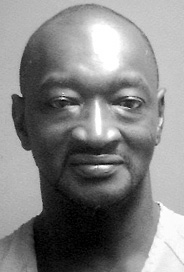Detective: Tenney ‘truly innocent victim’

Bennie Adams
A former prosecutor stands by his judgment in not prosecuting Adams in 1986 because of lack of evidence.
STAFF REPORT
YOUNGSTOWN — Detective William Blanchard had a hard time letting go of the murder investigation of 19-year-old Youngstown State University student Gina Tenney.
It wasn’t just because he had personally met her several days before her death when she reported a break-in at her apartment.
It wasn’t just because she was a young woman living alone or because Blanchard had a young daughter of his own.
The big reason he felt the need to find the person who strangled or suffocated her was because she had something you don’t regularly find in a homicide victim: She was completely innocent.
“There are truly innocent victims, and this is truly that type of case,” Blanchard said.
But despite the efforts of investigators and lab technicians, most of what they gathered in the Tenney case was what is known as circumstantial — or indirect — evidence.
Cases built on circumstantial evidence can be difficult to prosecute, some say. The better evidence is direct evidence, such as a statement from a witness who saw or heard something.
Blanchard and the Mahoning County prosecutor at the time, Gary Van Brocklin, disagreed back in January 1986 on whether there was enough evidence to convict Adams in Tenney’s death.
But at about the same time Tenney was killed, a Boardman woman told police that Adams and a 17-year-old co-defendant raped her in the Youngtown home of Adams’ mother. The rape occurred Aug. 14, 1985.
Adams was convicted at trial and went to prison for 18 years, released from prison in 2004. Jurors in the Tenney murder trial were not allowed to hear testimony about the rape conviction.
Judge Timothy E. Franken of Mahoning County Common Pleas Court ruled in September that the two cases were too different to be admissible as evidence and that introduction of the Boardman case would be too prejudicial to the jury in the murder case.
“I felt it was a strong circumstantial case, so I never understood why [Van Brocklin] wouldn’t take it on,” Blanchard, now fiscal officer and fleet manager for the Youngstown Police Department, said of the Tenney case.
The break in the case came when the Ohio attorney general’s office and Youngstown Police Department teamed up in 2007 to resubmit evidence to the Ohio Bureau of Criminal Identification and Investigation lab to see whether DNA could be used to reopen any cold cases.
The Tenney case was an obvious choice, said Kenneth Centorame, the department’s chief of detectives.
BCI found that Adams’ DNA was on Tenney’s body when it was found in the Mahoning River.
Van Brocklin, now an attorney in private practice, stands by his judgment in the Tenney case and adds that Ohio law regarding circumstantial evidence has changed since 1986 to the point that jurors are now advised differently on the validity of circumstantial evidence than they were then.
Coincidentally, Adams’ defense team filed a motion Monday asking that the laws regarding circumstantial evidence in effect in 1985 be used in deliberations by the Adams jury.
The defense attorneys asked Franken to instruct the jurors that they should conclude that Adams must be acquitted of any offense proved only with circumstantial evidence if there is a reasonable explanation for that evidence that does not involve Adams.
But the judge did not give the jurors that instruction.
Franken gave the jury current instructions, not 1985 instructions, concerning circumstantial evidence. The current instruction the judge gave the jurors states that circumstantial and direct evidence are to be given equal weight. The equal-weight rule was not in effect in 1985.
A favorite explanation judges give jurors is that a witness who said he saw someone eat a cherry pie would be offering direct evidence.
A witness, however, who saw someone with pie filling over his face and holding an empty pie pan would be offering circumstantial evidence that the holder of the empty pan ate the pie.
 43
43
